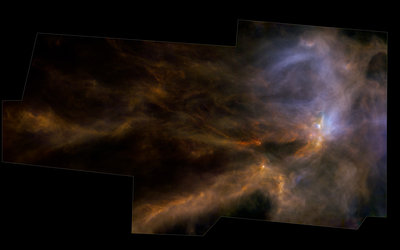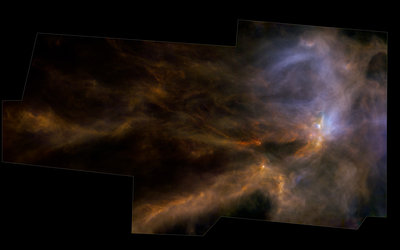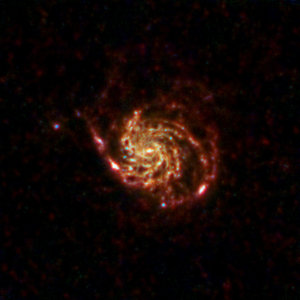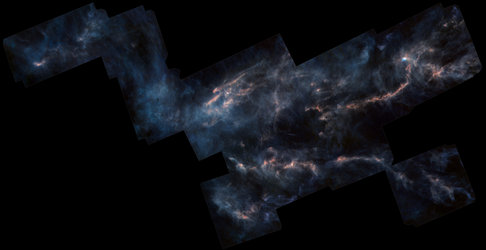Accept all cookies Accept only essential cookies See our Cookie Notice

About ESA
The European Space Agency (ESA) is Europe’s gateway to space. Its mission is to shape the development of Europe’s space capability and ensure that investment in space continues to deliver benefits to the citizens of Europe and the world.
Highlights
ESA - United space in Europe
This is ESA ESA facts Member States & Cooperating States Funding Director General Top management For Member State Delegations European vision European Space Policy ESA & EU Space Councils Responsibility & Sustainability Annual Report Calendar of meetings Corporate newsEstablishments & sites
ESA Headquarters ESA ESTEC ESA ESOC ESA ESRIN ESA EAC ESA ESAC Europe's Spaceport ESA ESEC ESA ECSAT Brussels Office Washington OfficeWorking with ESA
Business with ESA ESA Commercialisation Gateway Law at ESA Careers Cyber resilience at ESA IT at ESA Newsroom Partnerships Merchandising Licence Education Open Space Innovation Platform Integrity and Reporting Administrative Tribunal Health and SafetyMore about ESA
History ESA Historical Archives Exhibitions Publications Art & Culture ESA Merchandise Kids Diversity ESA Brand Centre ESA ChampionsLatest
Space in Member States
Find out more about space activities in our 23 Member States, and understand how ESA works together with their national agencies, institutions and organisations.
Science & Exploration
Exploring our Solar System and unlocking the secrets of the Universe
Go to topicAstronauts
Missions
Juice Euclid Webb Solar Orbiter BepiColombo Gaia ExoMars Cheops Exoplanet missions More missionsActivities
International Space Station Orion service module Gateway Concordia Caves & Pangaea BenefitsLatest
Space Safety
Protecting life and infrastructure on Earth and in orbit
Go to topicAsteroids
Asteroids and Planetary Defence Asteroid danger explained Flyeye telescope: asteroid detection Hera mission: asteroid deflection Near-Earth Object Coordination CentreSpace junk
About space debris Space debris by the numbers Space Environment Report In space refuelling, refurbishing and removingSafety from space
Clean Space ecodesign Zero Debris Technologies Space for Earth Supporting Sustainable DevelopmentLatest
Applications
Using space to benefit citizens and meet future challenges on Earth
Go to topicObserving the Earth
Observing the Earth Future EO Copernicus Meteorology Space for our climate Satellite missionsCommercialisation
ESA Commercialisation Gateway Open Space Innovation Platform Business Incubation ESA Space SolutionsLatest
Enabling & Support
Making space accessible and developing the technologies for the future
Go to topicBuilding missions
Space Engineering and Technology Test centre Laboratories Concurrent Design Facility Preparing for the future Shaping the Future Discovery and Preparation Advanced Concepts TeamSpace transportation
Space Transportation Ariane Vega Space Rider Future space transportation Boost! Europe's Spaceport Launches from Europe's Spaceport from 2012Latest

Celebrating Herschel's legacy
Thank you for liking
You have already liked this page, you can only like it once!
This delicate image showing the intricacies of interstellar bubbles and wisps reveals great turmoil in the W3/W4/W5 complex of molecular clouds and star-forming regions. It was taken by ESA’s Herschel Space Observatory, a trailblazing mission that observed the sky in far-infrared and submillimetre wavelengths between 2009 and 2013.
September has often been the month of memorable moments or milestones for Herschel.
When the satellite was still on Earth, it was in September 2005 that the assembled telescope passed its first tests.
September 2007 saw the mating of the mission’s ‘brain’ – the payload module with the instruments and the cryostat that would keep them at the required temperature, just above absolute zero – with its ‘heart’, or the service module, that would to keep the spacecraft going.
During the same month, scientists gathered to plan how to get the most of this extraordinary mission from the observing time that would be available.
Finally, the satellite was launched on 14 May 2009. A few months later, it was again in September that the first Herschel science observations were performed – a memorable moment for many astronomers across the world.
Eight years later, as the mission approaches retirement, ESA celebrates the marvellous science that it has achieved and takes stock of the legacy that Herschel leaves behind.
One of the areas where Herschel has made substantial contributions concerns the processes that lead to the formation of stars, surveying a large number of stellar nurseries like the W3/W4/W5 complex portrayed in this image.
Read more about Herschel’s unprecedented glimpse into the stellar cradles of our Galaxy and the giant strides that have been taken in our understanding of how stars and their planetary systems come to life.
Among many other exciting findings, Herschel’s observations have also traced the trail of water across the cosmos, and pieced together the evolution of galaxies throughout 14 billion years of the Universe’s history.
Follow Herschel Week to read more about these fascinating discoveries and about the legacy that the mission leaves for the future generations of telescopes.
Join ESA to celebrate Herschel Week and share your memorable #HerschelMoments
-
CREDIT
ESA/Herschel/NASA/JPL-Caltech; acknowledgement: R. Hurt (JPL-Caltech) -
LICENCE
CC BY-SA 3.0 IGO or ESA Standard Licence
(content can be used under either licence)

Rho Ophiuchi star-forming region

Herschel’s view of a star nursery

Herschel’s view of NGC 1097

Herschel’s view of the Pinwheel Galaxy















 Germany
Germany
 Austria
Austria
 Belgium
Belgium
 Denmark
Denmark
 Spain
Spain
 Estonia
Estonia
 Finland
Finland
 France
France
 Greece
Greece
 Hungary
Hungary
 Ireland
Ireland
 Italy
Italy
 Luxembourg
Luxembourg
 Norway
Norway
 The Netherlands
The Netherlands
 Poland
Poland
 Portugal
Portugal
 Czechia
Czechia
 Romania
Romania
 United Kingdom
United Kingdom
 Slovenia
Slovenia
 Sweden
Sweden
 Switzerland
Switzerland

























